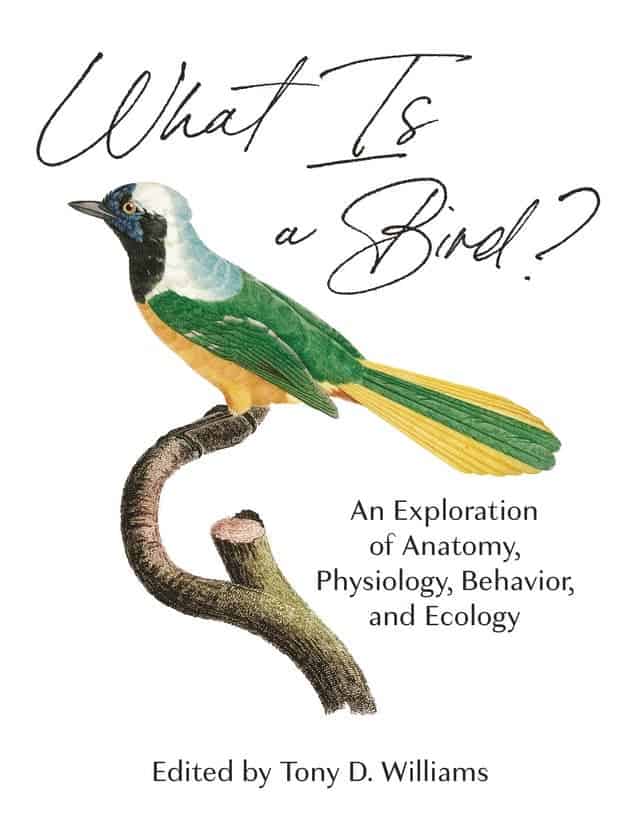
What Is a Bird?: An Exploration of Anatomy, Physiology, Behavior, and Ecology
by Tony D. Williams // Princeton University Press
Buy on Amazon
We don’t often give birds much thought, other than wondering what it would be like to fly about without a care in the world. But birds, these stunning winged dinosaurs, warrant more than a romantic idea — and they rarely fly without a care in the world.
For starters, birds are in a constant struggle to manage their resources. They tend to consume a lot of energy by flying and constantly need to replenish it. In order to do this, they’ve developed specialized adaptations, like hollow bones or the ability to drink seawater — adaptations that have enabled them to survive in almost all the environments on the planet. Birds have conquered not only the sky but also the earth.
A worthy book about birds
From the urban birds we see in our backyards to the exotic beauties we only get to see in documentaries, they all have something worthwhile about them. Whether it’s their complex mating rituals or their ability to adapt to urban environments, birds truly are remarkable. What is a bird does them justice: it showcases anatomy and behavior with scientific accuracy while keeping things brief and simple so that it’s easy to follow.
The book features hundreds of colorful illustrations and photography, intertwining bits of text with lavish photos that make reading (or skimming) the book feel pleasant.
Explanations are also accompanied by descriptive figures. Skim the book for a few seconds and you can enjoy its lovely photos. Read it carefully and you’ll probably be surprised at how much information it contains. From detailed sketches of birds’ biology to explanations of how they poop, it’s all in there.
What is a bird walks the reader through different features of birds, looking at their biology (how they breathe, what they eat, how they fly so efficiently) and their ecology (including the threats they face from human activity). It zooms in on unseen details in their anatomy using microscope photography, and it zooms out to have a look at the big picture.
Yet for all this, it doesn’t really feel like a book — it feels more like a museum. It’s as if you walk through the different rooms, see the exhibits, and read a bit about it without feeling any pressure. It feels relaxing and absorbing, and if you ask me, this is exactly how books of this kind should feel.
Good for all ages
The book is presumably mostly aimed at the armchair naturalist or the amateur birdwatcher. But its scope extends way beyond that.
Because it’s so richly illustrated, I found the book excellently suited for all ages. Growing up and way before I could read, my parents gave me a richly illustrated book on marine wildlife. Maybe it’s the geek in me, but I loved it. I had no idea what the book was actually saying until much later (and to be honest, I only remember bits of that), but the visual imagery stuck with me. What is a bird is exactly that kind of book: it stays with you.
If you’re well-versed in bird biology, you may not take all that much from the book, though even experienced birders may find themselves learning new things. Ultimately, What is a bird can even serve as an atlas, developed by one of the experts in the field of avian biology. The author, Professor Tony Williams, is an experienced researcher, currently focusing on physiological adaptations for breeding in birds.
Ultimately, the book serves as an exploration into the world of birds in more ways than one. It’s a detailed look at what makes a bird a bird as well as a celebration of these remarkable creatures. I’d recommend it to anyone looking for a foray into the natural world.






